Do you remember the scene from "Four Tankmen and a Dog" in which Janek Kos tells how he lost his mother during the bombing of Gdańsk in September 1939? As for us, it definitely does not add up. The only bombs that fell on Gdańsk then were ... Polish bombs.
But let's start from the beginning ... With the outbreak of World War II, the Naval Air Squadron stationed on the coast consisted of two squadrons:cooperation with the fleet and a training squadron. It was a total of 31 aircraft. The main strength of the squadron were Polish Lublin R-XIII hydrofoil planes. 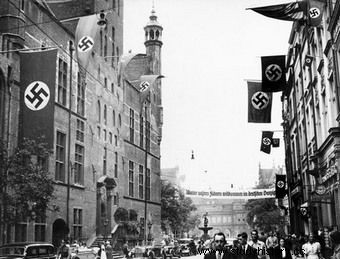
They were quite old structures, designed in the early 1930s. The crew consisted of a pilot and an observer. They reached a maximum speed of 195 km per hour, and were armed with one or two machine guns and up to 6 light bombs mounted under the fuselage. It was also possible to take the so-called mice, that is, small, one-kilogram cluster bombs.
Winged arm of the fleet
As Lublin slowly ceased to meet the requirements of the then battlefield, it was decided to strengthen the Polish naval aviation. In Fascist Italy, 6 modern CANT Z-506B Airone seaplanes were ordered at that time.
Unfortunately, only one machine of this type reached Poland until the outbreak of the war. The honor of Polish wings on the coast was therefore to be defended by Lublin R-XIII .
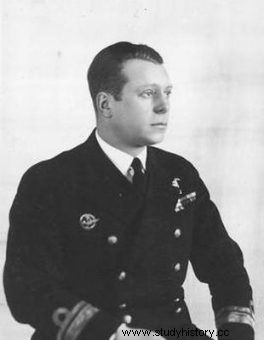
For the Naval Aviation Squadron, the war started very badly. Its commander, Lieutenant Edward Szystowski, died in the first fight.
The crew of the maritime squadron spent the last pre-war months very busy, conducting patrol flights and photographic reconnaissance over the Baltic Sea and in the border zone.
September 1 started unlucky for the Polish sea aviators. During the German air raid on the base in Puck, where the main forces of the squadron were stationed, its commander, Cdr Edward Szystowski, very popular in the Polish fleet, was killed.
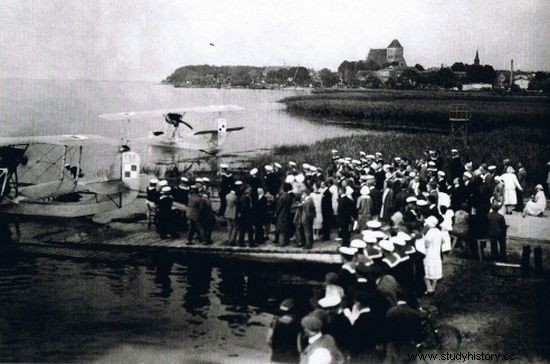
After the bombardment on September 1, the planes of the Naval Air Squadron were transferred from Puck to the other side of the Gdańsk Bay and `` deployed along the Hel Peninsula, on the section from Kuźnica to Jurata.
After this raid, which did not cause major material losses, the seaplanes were transferred to the other side of the Gdańsk Bay and deployed along the Hel Peninsula, on the section from Kuźnica to Jurata. There, Polish machines, not disturbed by the Germans, but also not taking part in combat operations, were based practically for the entire week. Until the night of September 7 came…
Risky scouting
In the evening of September 6, at the initiative of the chief of staff of the fleet, Cdr Marian Majewski, a night reconnaissance flight was ordered by one plane over the Gulf of Gdańsk and Puck.
The task of Polish aviators is to recognize the activity of German navy units, which, while operating in this area, took a heavy toll on Polish submarines. Cpt. Mar. pil. Józef Rudzki, as having the most experience in night flights, and Lt. Zdzisław Juszczakiewicz.
The task is risky, but not without a chance of success. Despite the fact that the Germans have absolute dominance in the air, they do not yet have night fighters. In such conditions, also Polish anti-aircraft artillery poses a lethal threat to its own planes .
Now, however, the threat from her seems small. It was forbidden to open fire on single planes, which was caused by the provocative flights of German reconnaissance machines trying to locate the positions of Polish guns.
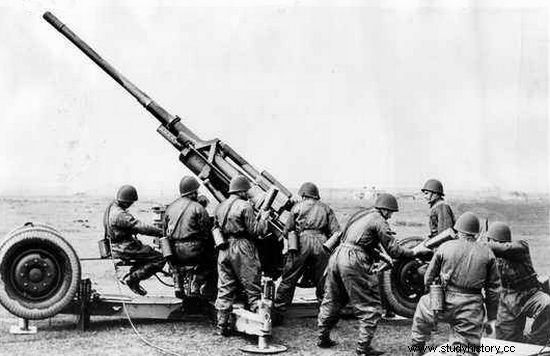
While flying at night, Capt. Rudzki and Lieutenant Juszczakiewicz were not exposed to the fire of their own anti-aircraft artillery, which could be as dangerous as fighter jets.
At around 21.30, the lonely Lublin R-XIII G (it is the latest version of this machine, delivered to the squadron just before the war), tactical number 714, breaks off from the surface of the Bay's waters. .
The flight conditions are perfect:in the moonlight, you can clearly see the dark silhouettes of the numerous German ships on the Gulf. The entire action takes about two hours. After completing the task, the Poles happily land in the designated place.
Crazy mission of Polish pilots
The success of the operation made Rudzki and Juszczakiewicz come up with a rather crazy idea:to fly the next night and this time to bomb the battleship "Schleswig-Holstein" to ease the Westerplatte crew a bit. It was a rather risky task, the more so that the Polish pilots had only light, 12.5 kg bombs, which could not do much damage to the German battleship.
Commander Majewski, however, accepted the proposal of both pilots. It is true that on September 7, the German radio announced the surrender of the defenders of Westerplatte, which called into question the legitimacy of the mission, but it was not believed.
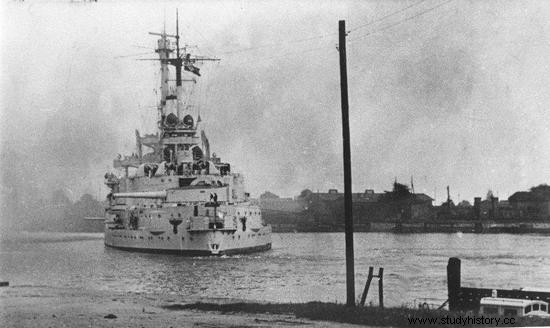
On September 7, Capt. Rudzki and Lieutenant Juszczakiewicz set off on a mission aimed at bombing the old battleship "Schleswig-Holstein". Unfortunately, they were unable to locate it in the dark.
September 7 at 21.30 Polish Lublin R-XIII G with tactical number 714 takes off for the next flight. This time the seaplane is armed with 6 12.5 kg bombs. The observer also has a full supply of machine gun ammunition. The plane flies over the Hel Peninsula and heads to the open sea. Then it takes a course to Wisłoujście and from the east it flies to Gdańsk, looking for the place where "Schleswig-Holstein" is moored. Polish airmen, however, cannot locate the German battleship, and their attention is drawn to something completely different.
Bomb party
In the area of Adolf Hitler Straße (now Aleja Grunwaldzka), the pilots notice a large cluster of lights. It turns out that the Germans are celebrating the capture of Westerplatte. Rudzki, without thinking for long, steers the machine in that direction. Over the target, the observer drops all bombs into the celebrating crowd . Lt. Juszczakiewicz later recalled:
(...) all the bombs went down, exploding amid the crowd of joyful Nazis. Then the machine, at full speed, made a tight twist and descended again low over the street, leaning to the wing, so that the observer could open fire with the machine gun.
The consequences of the raid turned out to be tragic for the Germans. The killed and wounded were immediately sent to the street, dozens and hundreds of people in a mad panic choked and trodden at the gates of houses, looking for shelter from the rain of Polish bullets chopping down from under the shade of heaven.
The attack for the Germans ended tragically. More than 30 people were killed and many were injured. The Polish plane emerged unscathed from the anti-aircraft fire and at At 22.45 he was happily launched on the shores of the Hel Peninsula.
This time the Germans decided to correct their mistake and eliminate the Polish seaplanes, so disregarded by them. The next day at At 7.00 a.m. Stukasy bombed the anchorage with the machines of the naval squadron.
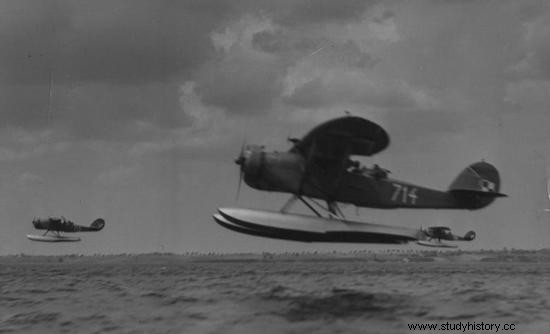
Lublin R-XIII G. It was while flying such a machine that Rudzki and Juszczakiewicz bombed Gdańsk.
The losses were great. Except for one training RWD-17 and two liaison machines, all the other planes were more or less damaged or destroyed. The destruction was completed by the Poles themselves, who, on the order of the Coastal Defense Command, sank the damaged equipment. The Naval Aviation Squadron has definitively ceased to exist.
What about that mom ?!
Returning to Mrs. Kos, if she did die in this bombing, how did she, the wife of a Polish officer, find herself at a German party? Could the first tanker of the People's Republic of Poland be, speaking in the language of football, the so-called a dyed fox, or maybe even worse, a hidden German option? We will probably never know that again.
